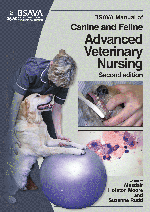
Full text loading...

Dentistry is one of the most important aspects of veterinary healthcare alongside vaccination and medical care. Routine veterinary dentistry treatment is not only prophylactic but also involves treating existing disease and stopping or slowing down the progression of periodontal disease. In other cases, painful conditions can be alleviated which may not have been noticed by the owner and/or may have been mistaken as a ‘normal’ ageing process. It is no longer acceptable to ignore these problems or to treat them as minor or secondary problems to be dealt with at the same time as other surgical procedures. The Royal College of Veterinary Surgeons (RCVS) advises that veterinary nurses should be able to perform a thorough oral examination, record the findings on a dental chart, take intraoral dental radiographs, perform periodontal therapy (excluding periodontal surgery) and offer instruction in homecare and ongoing oral hygiene. The chapter covers Dental anatomy; Instrumentation; Dental examination; Dental radiography; Common dental pathology; Dental treatment; and Dental homecare and owner compliance.
Dentistry, Page 1 of 1
< Previous page | Next page > /docserver/preview/fulltext/10.22233/9781905319725/9781905319725.9-1.gif

Full text loading...


























